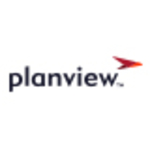What is most valuable?
HP ALM is a good tool for a centralized and coordinated view of requirements, tests, defects, and iterations.
The main barriers of entry are cost and implementation, especially if an enterprise implementation is the best solution
How has it helped my organization?
Being able to have one place to review defects, testing progress, and defects was very useful.
Merging 40 different streams, just for defects, into one solution that had good search and reporting capabilities saved a significant amount of time in coordination, defect management, and by consequence, there was better control of the quality of delivered software.
What needs improvement?
The main barriers of entry are cost and implementation, especially if an enterprise implementation is the best solution
For how long have I used the solution?
I have used this solution for eight years in a variety of versions and companies.
What was my experience with deployment of the solution?
The biggest challenge was finding the appropriate resource balancing for the enterprise release. It is not very clear how that was going to be implemented due to documentation in 2010.
If there is a need for third-party integration, the documentation is not very good. We were able to integrate with FIT, but it took a very capable programmer to figure out how to do it. Again, this was in 2010. Hopefully, the documentation has improved.
What do I think about the stability of the solution?
I did not encounter any issues with stability.
What do I think about the scalability of the solution?
I did not encounter any issues with scalability.
How are customer service and technical support?
Customer Service:
Customer service was adequate.
Technical Support:
Technical support was adequate
Which solution did I use previously and why did I switch?
We used a lot of home grown 'tools' and spreadsheets in one location and Lotus Notes in another.
How was the initial setup?
In one instance, it was straightforward because anything was better than spreadsheets.
In the location that used Lotus Notes, there was a significant amount of resistance because of loss of control.
Neither instance was due to the tool, but it was due to cultural issues.
What about the implementation team?
The implementation was done in-house.
What was our ROI?
At a Fortune 100 company, we achieved a reduction of 30% of defects in the first year and decreasing percentages the subsequent years.
The dollar figures were proprietary, but were significant even for an $11 billion dollar revenue company.
What's my experience with pricing, setup cost, and licensing?
The main concern is that there is a significant dollar investment, so do good research to make sure the tool will meet your needs.
Which other solutions did I evaluate?
We evaluated IBM tools, as well and a couple of Open Source tools.
Disclosure: I am a real user, and this review is based on my own experience and opinions.

















Nice review Gourav. I did have a question. How was the learning curve for QA team members for learning BPT module of QC when your company originally started using BPT?